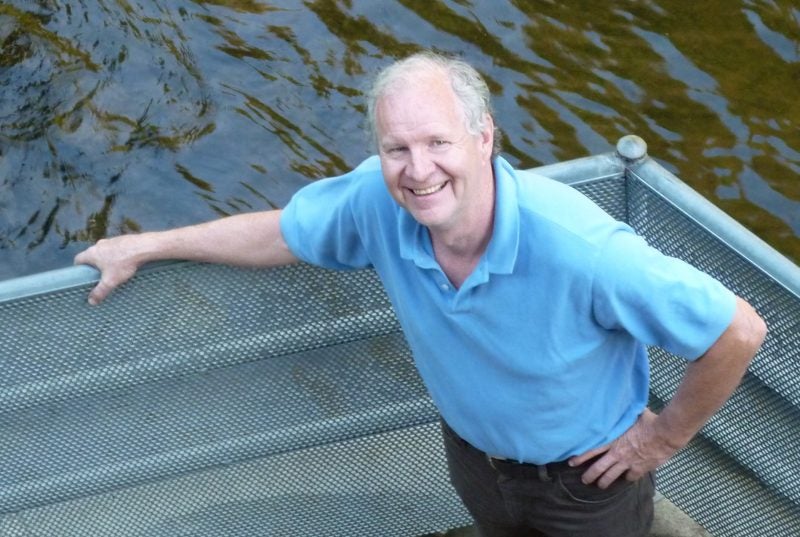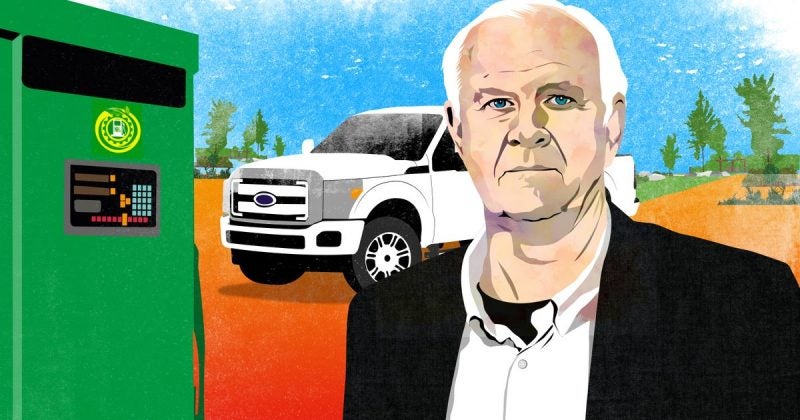The debate is ever-raging – what will the car of the future run on? Some are saying electric. Some say hybrid, even solar. Or perhaps there’ll be some kind of breakthrough that prognosticators haven’t yet though up.

Renewables are being experimented with at a rapid pace by private industry, and Western democracies around the world, including a $90B investment by former president Obama.
But amidst these efforts, an unlikely hero might arise, in a man named Roger Gordon. He’s created a method so that a long sought-after practical and clean energy solution is finally within reach.
Gordon, an entrepreneur from Ontario, Canada, has developed and patented the technology to make ammonia (also known as NH3) a realistic replacement for fossil fuels. The best part? NH3 when burned emits harmless nitrogen and hydrogen – it’s a zero carbon solution.
Even better part? His fridge-size NH3-producing machine pulls all the ingredients from thin air, and runs on solar energy – not on the grid. The machine can be bought for $10,000, or leased, holds about 150 gallons, and produces about 5 gallons an hour. Fuel efficiency is about 80-85 per cent of common gasoline.
He’s also created a way to easily retrofit automobiles for just $1,000US, and that methodology can be applied to fit airplanes, factories, and anything that runs on gasoline.
Just to show proof of concept, in the summer of 2007, Gordon drove his NH3-fuelled Ford F350 from Detroit to San Francisco (2,400 miles). But he’s not the only one – he says that there’s a hundred others just like him, around the world, running vehicles of all types off of NH3.
Gordon (no relation) has already received interest from local farmers, airlines, and companies like Polaris zinc mine in the Northwest Territories.
Meanwhile, this “Green NH3” project has received tremendous endorsements and accolades, everywhere from Shark Tank’s Kevin O’Leary, and even a letter of encouragement from Justin Trudeau.
“ The power is in our hands to significantly reduce fossil fuel pollutants in just a few years, to make a better world for our children,” says Gordon. “NH3 fuel can help fast-track our targets to a greener, healthier, more prosperous environment.”
The power is in our hands to significantly reduce fossil fuel pollutants in just a few years, to make a better world for our children,” says Gordon. “NH3 fuel can help fast-track our targets to a greener, healthier, more prosperous environment.”
Surprisingly, the idea itself for this technology isn’t any kind of futuristic wizardry. In fact, NH3 fuel has been used successfully as fuel in the past. For example, During World War Two, in response to the extreme diesel shortages, Emeric Kroch of Belgium developed an ammonia/coal gas hybrid motor to keep public transportation in operation.
Just a few years later, NASA’s X-15 jet was fuelled by NH3. (Back then, though, the NH3 had to be created using fossil fuels.)
One of the biggest consumers thus far of NH3 has nothing to do with transportation, however. Today on the industrial side, two hundred million tons of ammonia are produced each year for fertilizer and pharmaceutical uses, he says, but it all has to be made “on the grid,” mostly through burning coal. Imagine the environmental impact if that alone could be changed.
Besides cheap fuel, and eliminating smog and vehicle exhaust, using NH3 will save 600,000 annual deaths of children under five, attributed to airborne fossil fuel pollutants. It means no more disastrous oil spills (think Exxon), no more oil drilling through oceans and land, and no more sending cash-for-barrels to unfriendly regimes.
NH3 will even prove better than existing eco-friendly attempts with electric cars, that largely rely on fossil fuel-generated electricity to charge them. There is also some controversy about whether the manufacture of battery parts (and their disposal) causes more environmental damage. (This topic was explored in Michael Moore’s recent documentary Planet of the Humans.)
Gordon’s goal for the very near future is to receive enough subsidization – either through government or private enterprise – to bulk manufacture 2,500 NH3 machines. Something to get the ball rolling.
Government officials in Canada – while they know about Gordon and his project –are taking a “wait and see approach,” he says. It is “baffling they’re not jumping on board,” he adds, especially given their many robust steps towards cleaner fuels in recent years, with the federal carbon tax, the $20 million climate change institute, the electric car subsidy, and a $150 million geothermal plant in Saskatchewan. “NH3 will just take more time, I think, because it’s new,” he says.
Yet, he’s seeing possibility south of the border, hoping that the new Biden administration – with a potential move towards some kind of ‘New Green Deal’ – could be the breakthrough needed to move forward.
In years ahead, he hopes, it’s possible there’ll be NH3-generating machines at every filling station, just as soon as the retrofit catches on, and of course, bureaucratic regulatory bodies give the go-ahead. With the right will, and financing, a million cars could be fitted in ten years, he says.
So whatever cool things your next car can do, what ever add-ons or tech it has, expect the “must-have” at some point will be the ability for your car to run on NH3.

















